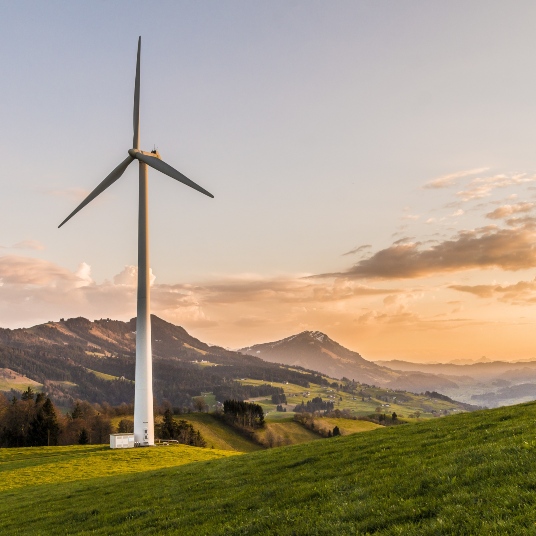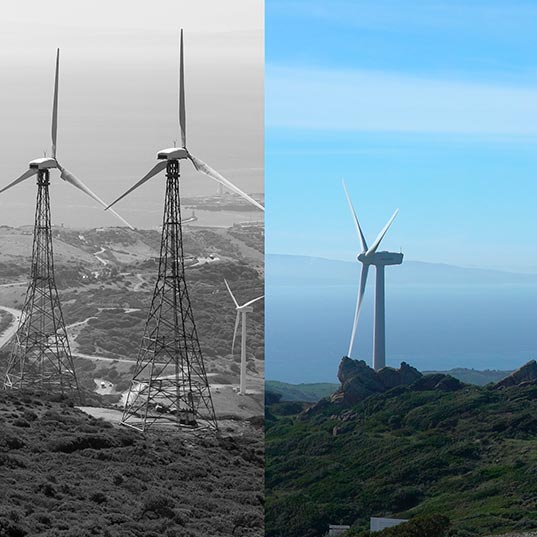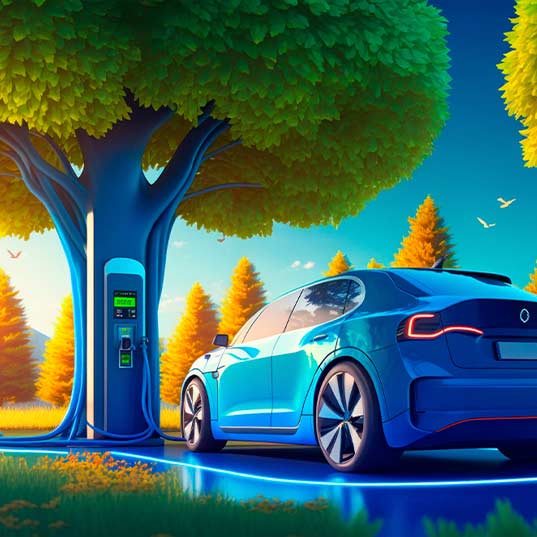The environmental impact of non-renewable energies: climate change and more
The global temperature rise is just one of the environmental impacts of non-renewable energies on the planet
If we want to comply with the Paris Agreement and prevent the global temperature from increasing by more than 2°C this century, it is essential that 60 % of the oil still available, as well as 90 % of the coal, remain unused underground. This comes from a recent study published in Nature, which encourages us to stop using non-renewable energies to save ourselves from a climate disaster. The dangers of these energy sources extend far beyond global warming. We will tell you more about the environmental impacts of non-renewable energies.
What will I read in this article?
- The problem with non-renewable energies
- Environmental impact of non-renewable energies
- The fuel of climate change
- Oil slicks and spills
- Radioactive waste
- Acid rain
- Effects on human health
- Energy transition: the route towards renewables
The problem with non-renewable energies
 Let's start with a significant fact - in just one year, humans consume what nature has taken millions of years to produce. This is the case with fossil fuels, for example. It takes thousands or millions of years for them to form, and in a few short decades we will have exhausted all the reserves of these energy sources.
Let's start with a significant fact - in just one year, humans consume what nature has taken millions of years to produce. This is the case with fossil fuels, for example. It takes thousands or millions of years for them to form, and in a few short decades we will have exhausted all the reserves of these energy sources.
“It is essential that 60 % of the oil still available, as well as 90 % of the coal, remain underground”
Coal, oil and natural gas are known as non-renewable sources of energy because they exist in limited quantities in nature. In other words, they are generated from finite resources or they take an extremely long time to regenerate.
Nuclear energy is also a non-renewable energy source because the uranium it uses as fuel does not regenerate on its own. Nevertheless, it does help to fight against climate change, because it does not emit CO2 or greenhouse gases.
Environmental impact of non-renewable energies
These resources are found in nature, but they disappear as they are used. According to a recent study published in the scientific journal Nature, oil reserves will be depleted by 2043. The same applies to coal and natural gas - the date when we will no longer have these fossil fuels is fast approaching. But the reason why we must urgently seek new sources of energy is not because these resources are running out, but because of the serious environmental impact of non-renewable energies on our planet.
The fuel of climate change 🌎🌡
Fossil fuels account for 80 % of current global demand for primary energy, and the energy system is the source of approximately two-thirds of worldwide CO₂ emissions.
Both CO₂ and other greenhouse gases are able to accumulate and emit heat. And, as the experts have shown, an increase in the concentration of CO₂ in the atmosphere leads to a significant increase in the Earth's temperature. Today, the Earth's temperature has already increased by over 1°C since the pre-industrial era. You can read more about it here.
“Fossil fuels account for 80 % of current global demand for primary energy”
If current trends continue – i.e. if the current share of fossil fuels is maintained and the forecast that energy demand will double by 2050 proves to be correct – we will be a long way from keeping the global temperature rise to 2°C, never mind 1.5°C. Such warming would have disastrous consequences for the planet and its climate.
Oil slicks and spills ⚠🛢
Furthermore, on the list of environmental disasters resulting from human activities, oil slicks are among the most serious and also the most common. One of the most affected areas on the planet is the Amazon.
Having been affected since 2014 by frequent oil spills, nearly 400 communities in the Peruvian Amazon have lead, cadmium, mercury and other heavy metals in their system.
The province of Sucumbíos, part of the Ecuadorian Amazon, is one of the areas most affected by oil pollution. Food, water and air are affected by spills. The rainforest is full of mecheros, huge chimneys that burn the exhaust gases from oil extraction and also pollute rainwater, the primary source of water for the area's inhabitants.
Radioactive waste ☢❗
Where nuclear energy is concerned, it is necessary to handle radioactive waste correctly. This is waste that cannot be recycled and must be stored very safely because it can generate radioactivity for centuries and even millennia. Nuclear waste has to be managed by ensuring maximum safety, as radioactivity is harmful to the health of people and the planet. Radioactivity released in large quantities is lethal and can also cause deformities and disease in people living in the area over several generations.
You only have to listen to the stories of those who, decades later, are still suffering the effects of the Chernobyl nuclear accident.
Acid rain 🌧💦
Acid rain is one of the consequences of air pollution. It happens when pollutant emissions from factories, cars or central heating boilers come into contact with atmospheric humidity. These emissions are caused by the burning of fossil fuels, and lead to the acidification of soils, lakes and seas with the resulting damage to land and marine flora and fauna.
Effects on human health 😷🤒
The fact is that all the consequences of using non-renewable energies mentioned above have an impact on people's health in one way or another. But, looking at more specific data, air pollution from burning fossil fuels causes 4.5 million deaths worldwide each year, according to a study by Greenpeace and the Centre for Research on Energy and Clean Air (CREA). Not to mention that, according to WHO estimates, about 4.2 million premature deaths occur annually from exposure to metal particles linked to burning fossil fuels.
Energy transition: the route towards renewables
 Fortunately, all of these impacts can be prevented, lessened and even reversed. How? By firmly committing to renewables and supporting a definitive transition to clean and inexhaustible sources of energy. We are talking about wind energy, photovoltaic solar energy, solar thermal energy, hydraulic energy and so on.
Fortunately, all of these impacts can be prevented, lessened and even reversed. How? By firmly committing to renewables and supporting a definitive transition to clean and inexhaustible sources of energy. We are talking about wind energy, photovoltaic solar energy, solar thermal energy, hydraulic energy and so on.
According to the Nature study mentioned at the beginning of this article, if we do not stop using non-renewable energies immediately, the temperature rise that awaits us will bring irreversible changes to our planet - more heat waves, longer warm seasons, shorter cold seasons, a surge in the most extreme weather events etc.
The energy transition is the only way forward if we want to achieve the most ambitious objective of the Paris Agreement: to limit the rise in the temperature of the planet to 1.5°C above pre-industrial values, which according to the IPCC would mean that carbon neutrality can be achieved by 2050. Effort is required on the part of all countries to create a global energy system that is stable, sustainable and affordable. A world that functions on the basis of renewable energies is critical to guarantee our future and that of the planet.
Sources:
https://www.un.org/en/chronicle/article/role-fossil-fuels-sustainable-energy-system
https://www.nature.com/articles/s41586-021-03821-8
https://www.activesustainability.com/renewable-energy/the-most-used-renewable-energies/







